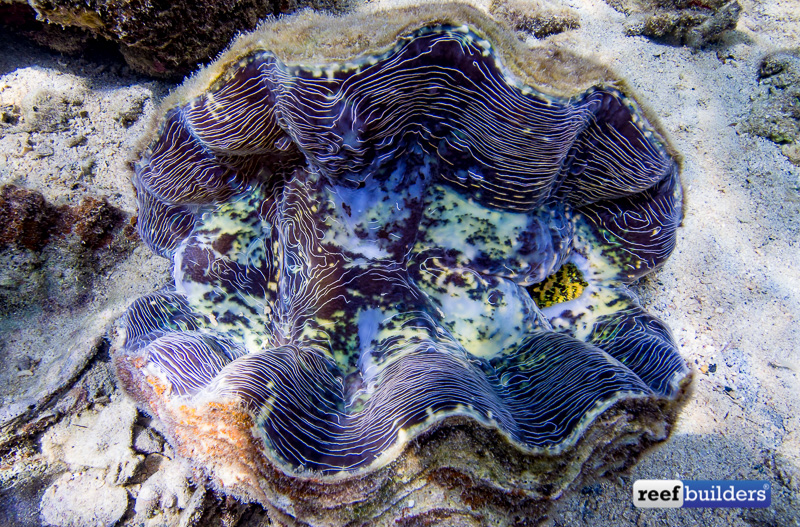Giant clams are some of the most magical creatures we keep in our reef tanks. Although the vast majority of Tridacna and Hippopus clams in the aquarium hobby come from giant clam farms, this group of reef animals is under intense pressure from many other causes.

Giant clams are an important source of food in many tropical coastal communities and more alarmingly, the Chinese curio and ivory trade has set its sights on the shells of Tridacna gigas, the largest of all living bivalves. Unfortunately, while China has recently increased the pressure to reduce the ivory trade in elephant tusks, it seems to also be promoting the harvest of giant clam shells with some very destructive ‘fishing’ practices.

In response to the intense over harvesting of giant clams for food and ornament, seven of the ten species of giant clams are being proposed for listing under the United States Endangered Species Act. The smallest three species – loosely called the ‘blue clams’ – including Tridacna crocea, T. maxima and T. noae have already been dropped from the proposal. Thankfully these are the most popular species for aquariums and they are not in danger of being listed.
However the seven larger species of giant clams – loosely called the ‘green clams’ – are still part of the petition and we agree that several of them deserve all the protection that they can get. T. gigas, T. derasa, T. squamosa, T. costata, T. mbalavuana, H. hippopus, and H. porcellanus are all being considered for ESA listing. The common hippopus, T. derasa and T. squamosa are very common and also farmed in quite large numbers so these shouldn’t be listed in our opinion.
 Both H. porcellanus and T. mbalavuana are very rare species to begin with and the true giant Gigas clam are rapidly disappearing from many places where they were once common. While we agree that giant clams should get all the protection that international laws can afford them, listing under the ESA will not affect the primary pressures upon them – mainly as food in remote coastal regions and the curio trade in Asia.
Both H. porcellanus and T. mbalavuana are very rare species to begin with and the true giant Gigas clam are rapidly disappearing from many places where they were once common. While we agree that giant clams should get all the protection that international laws can afford them, listing under the ESA will not affect the primary pressures upon them – mainly as food in remote coastal regions and the curio trade in Asia.
Face to face with the mythical Devil Clam, Tridacna mbalavuana
An ESA listing will only make it that much harder for giant clam farmers to sell their aquacultured products either to restaurants or the aquarium hobby. Because if even one clam species is listed under the ESA, ALL giant clams traded across international borders will require extra documentation and inspection.
This is a tough environemntal issue for us because we really believe that several of the species should be given the utmost protection possible, but not at the expense of the highly sustainable giant clam aquaculture industry. The last day for public comments has already passed so we’ll have to wait and see what transpires with the proposal to list giant clams as soon as we hear any new developments. [Courthouse News]



